I'm quite excited for the Starship Troopers: Extermination single-player
![]() .
.
Read the full article on GamingOnLinux.
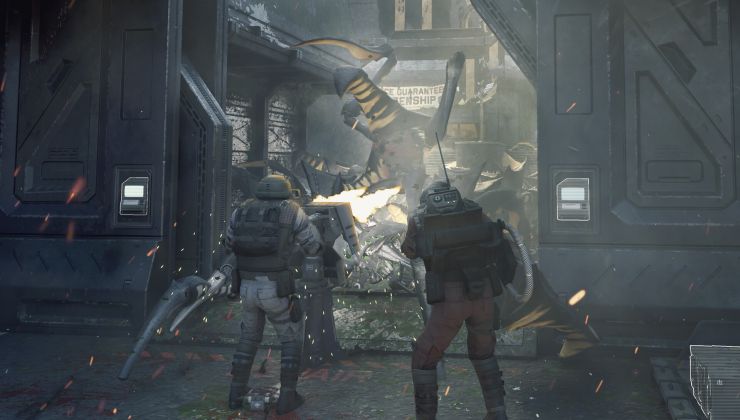
![]() .
.
Read the full article on GamingOnLinux.

Mountaintop Studios and popular creator and former Counter-Strike and Valorant pro, Michael ‘shroud’ Grzesiek have brought a contender to the F2P multiplayer tactical FPS genre. Mountaintop hopes to make a big break with Spectre Divide, as they are an independent studio composed of veterans from Respawn, Epic Games, Riot Games, Bungie, and the like. Spectre Divide features a unique art style for the genre with sci-fi comic book art and the classic Japanese cel animation of the ’90s—a little reminiscent of Rollerdrome or the No More Heroes games. What is more distinct about this game is its gameplay gimmick.
At first glance, the concept of controlling two characters simultaneously does not seem like something that should work in a relatively fast-paced competitive shooter game. Yes, there is some time to strategize around the map and jump-peak or use utility to gain information. However, adding a new concept, like having a second body, appears to be a dynamic addition.

The function of what the devs call ‘Duality’ allows players to control their ‘Spectre’ or second body, as well as their main body. Players can swap between the two bodies. The coolest part is that players can open up their map to lay out their two bodies during the Buy Phase/Pre-round Phase—including having the bodies face a certain direction. Moving characters around via clicking the map looks so choppy and jarring, but once the pre-round timer is up, this function ceases.
Having the second body can be super helpful. If a player’s unused body is idle, it can still give information that an enemy is near or if an enemy is in sight through danger indicators. Additionally, the unused body goes into a crouch position, making it harder for enemies to spot when placed correctly. Or it can be great to have it crouched slightly, peeking as a decoy at strategic angles.
The unused body can also be moved through the ‘pucking’ action, with some delay depending on the distance. This is the primary function so when the main player dies, they are not stuck trying to run all the way from where they had their Spectre setup. Like the game’s name implies, it is relatively smart to divide the Spectre from the main body.

Spectre Divide has utility skills, which are very similar to various Hero skills in Overwatch or Agent utility in Valorant. Another important distinction with Spectre Divide is that there are no Champions, Heroes or Agents; there are Sponsors. Sponsors work in place of roles, such as Assault/ADC/Dualist or Support/Healer in other games. Having a good balance of Sponsors can easily make or break a victory in this game, with the various assortment of utility skills—including recon.
A big question many new players who came from other FPS games asked was what the spray/recoil patterns for each gun, aiming, and ADS aiming were like. For the first part, every fully automatic and semi-automatic gun had a random spray pattern. This is an interesting feature because it means it is not something someone can particularly get used to, like a Vandal spray pattern in Valorant or an AK-47 spray and recoil pattern in CS2 or CS:GO.
It means that players should practice their ADS firing since the accuracy is pretty near to one-hundred percent. There is also no bullet punch when taking damage, so players do not have to worry about suddenly aiming at the sky when getting shot at. Single-tap or burst-fire skills are more important in Spectre Divide for the guns that require it, otherwise ADS-ing and spraying is the way to go. And like Apex Legends, running in this FPS tac-shooter is encouraged.
What irked me and my teammates the most is the fact that enemy colour highlights are insanely non-user-friendly. It took a few games for us to not accidentally shoot at one of our teammates or teammates’ idle body. Eventually we got used to it, but it was not as distinguished as other FPS games.

The things that will have many Spectre Divide players divided will probably be how overstimulating it can be to jump into a match at first, as well as how many guns they will have to know the names of. The Duster RX6 plays like a Desert Eagle or Sheriff; the M67 Reaver plays like an AK-47, dishing out great range and damage; and the Harpe and Prototype-OP play very much like a high-powered sniper in most FPS games. One shot to the head at any range, one kill, baby!
The gun buys are interesting in Spectre Divide, sort of a mashup of Call of Duty multiplayer default loadouts. Guns are bought in pairs and distributed to the player and the Spectre. Interestingly enough, when one of the characters one player controls dies but the other lives, there can be special economic buys for keeping the same pairing of guns in the next round.
Based on a lot of feedback from other players I talked to from games and my own teammates, I have gathered that this game comes off as something for those who already have put in some if not countless, hours into other FPS games. Spectre Divide is easily an amalgamation of games like Valorant, Apex Legends, Overwatch, Halo, amongst many more. This makes sense since a lot of Mountaintop Studios’ team used to work at the companies that made many of those titles.

There are a lot of fun mechanics to try and experiment with in Spectre Divide, such as using Ghostlink Collective’s Dupe ability while pucking away or using it and running with the decoy body. Another cool thing we found out was how Ryker Industries’ Wave Scan could scan the whole map if you throw it while pucking away.
Hopefully by launch, there will be better aesthetic additions to the game—here is hoping there will be a way to do Fortnite-adjacent dances in the team lobby. The sprays and gun buddies could also be improved upon, but again, that may come with more time and players making memes and/or pro-player and community involvement to grow the fan base of Spectre Divide.
The ultimate judgment of Spectre Divide is how it may not be as inviting to newer FPS gamers. Even someone who is well-versed in other FPS titles will struggle a bit getting used to pucking around their Spectres, and learning more about the advantages and disadvantages of things like guns or Sponsors.

There are a lot of extra keybinds to learn and re-map, too, but the tutorial does a decent enough job explaining it all. The economy catch-up system is great, too, since two losses allow the losing team to get a free light shield. But it could be good for newer players ithe a sense that they can build the proper game sense tailored to this game versus carrying over irrelevant habits from other FPS games.
Spectre Divide will not be out on the PlayStation 5 and Xbox Series X|S consoles at launch, but devs have stated that they have “future plans for consoles.” There is also no release date for PC yet either.
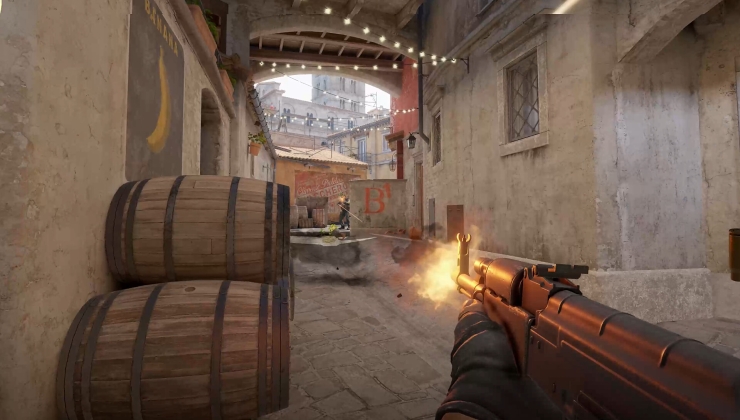
![]() .
.
Read the full article on GamingOnLinux.

Gamescom Opening Night Live 2024 is done and dusted for another year, but it's certainly kicked off this year's Gamescom with a bang - and we've got all the news, trailers and announcements right here in one handy summary. Whether you missed the show itself or just want a handy reminder of everything announced at Gamescom Opening Night Live this year, read on below.
Of course, alongside the main show, this year's ONL also had a 30-minute pre-show that was stuffed with announcements as well, which we'll quickly run through here before getting into the detail of the main show announcements below. Here, we got new trailers for Dave the Diver's latest crossovers, spooky co-op adventure Begone Beast and construction sim Roadcraft, alongside Italian Soulslike Enotria: The Last Song, Cairn (that shouty, but lovely looking climbing game from Summer Game Fest), life sim Inzoi from PUBG publishers Krafton, as well as a Terry showcase for Street Fighter 6.
There were also new game announcements in the pre-show in the form of Sniper Elite Resistance (coming 2025), the Donkey Kong-esque platformer Nikoderiko: The Magical World (with music from David Wise, no less), "first person farming horror allegory" We Harvest Shadows, the also quite spooky-looking Aila, a tease for the sequel to Journey to the Savage Planet (aptly named Revenge of the Savage Planet), action RPG Tribe Nine from the creators of Danganronpa, and the Lashana Lynch-led Directive 8020: A Dark Pictures Game.

Bethesda's first big expansion to Starfield, Shattered Space, will launch for PC and Xbox Series X/S on 30th September.
We got a quick look at the upcoming addition tonight during Gamescom Opening Night Live, in a trailer that mostly focused on the REV-8 land vehicle included in August's free game update.
Ahead of launch, marketing for Starfield felt fairly sober and dramatic - it's fair to say tonight's video takes a more upbeat tone. Previously, Bethesda's Todd Howard said that the lack of land vehicles was a deliberate choice - but it's now something that's being walked (or driven) back.

Dying Light developer Techland has shown off a new game in its zombie series that began life as a DLC for Dying Light 2 Stay Human.
Announced during Gamescom Opening Night Live, Dying Light: The Beast is a solo or four-player co-op experience pitched as a "tight" 18-hour ride through a fresh area of the franchise's world.
Dying Light protagonist Kyle Crane, once again voiced by Roger Craig Smith, returns here, a decade on. In-game, Crane has been in captivity, and experimented on. The upside? You have zombie DNA powers to unleash that beast on enemies.

The creator of the now-defunct Call of Duty Modern Warfare 2 mod, H2M, has opened up about what happened when Activision slapped the mod with a cease and desist, admitting, "the past couple of days have not gone to plan".
Although the mod - which upgraded Modern Warfare 2's multiplayer mode - was announced over a year ago, the cease and desist arrived the day before the mod was scheduled to be released last week, forcing the project to "shut down [...] immediately and permanently".
Shortly thereafter, unhappy Modern Warfare 2 fans jumped onto the Steam page to express their dismay.

Modern military shooters are in a strange place at the moment. Battlefield is licking its wounds after stepping on the landmine that was Battlefield 2042, while Call of Duty is running around like the dog that caught the car, the massive success of Warzone leaving the mainline series at a loss with what to do with itself.
It's a chaotic, uncertain time in one of multiplayer gaming's biggest spheres, and the various shenanigans of EA and Activision have left room for something new to make its mark in the genre. Enter Delta Force: Hawk Ops, which you'll be shocked to hear is not a Trauma Team-style game about performing surgery on birds of prey. Instead, it's a free-to-play military shooter in the Battlefield/CoD mould, based on the series that predates either, and it could be the shot of competence and stability that the genre sorely needs.
Currently running a month-long Alpha, Hawk Ops provides access to two of its three game modes. The first of these, Havoc Warfare, is a classic large-scale attack/defence scenario similar to Battlefield's Rush, with the attacking team trying to capture a linear sequence of control points, and the defending team attempting to hold back the tide until the attackers' collective pool of lives runs dry.

nDreams, the developer behind one of my all-time favourite VR titles, Synapse, has announced a new shooter game called Vendetta Forever during this week's VR Games Showcase.
If that wasn't cause for celebration enough, nDreams also released a short, Quest-exclusive demo for the game that I played through for this week's episode of VR Corner. In the video, you can see me play the Quest 3 version, but it will also be available on the Quest Pro, Quest 2 and the PS VR2 at some point in October.
So what is Vendetta Forever? Well the easiest way to describe it is a mash-up of Superhot and Pistol Whip, with some of the best aspects of both games cherry-picked and given a little twist to make them feel fresh and unique. The monochromatic-but-not-quite visuals are definitely more Pistol Whip-y, but the title screen is just full of those iconic Superhot reds, whites and blacks. Then there's the main menu, which is almost a carbon copy of Pistol Whip's, with mutator and level select options, alongside online leaderboards and a nice little shooting gallery area which is something Pistol Whip does lack.

Destiny developer Bungie says it has addressed an issue where players have had their usernames changed by its "name moderation tool".
After "actively investigating" the issue for 24 hours, Bungie advised that while it had "identified the issue that was forcing a high number of Bungie name changes", it was "continuing to investigate" what happened and how "to address player accounts that were impacted".
Although Bungie acknowledged that a "high number of account names have been changed", the studio stopped short of confirming exactly how many players were affected.

Call of Duty: Modern Warfare Remastered mod, H2M, has been cancelled following a cease and desist demand from Activision.
Although the mod - which upgraded Modern Warfare 2's multiplayer mode - was announced over a year ago, the cease and desist arrived yesterday, a day before the mod was scheduled to be released later today.
"Today, our team members received a Cease & Desist order on behalf of Activision Publishing in relation to the H2M-Mod project," the team explained on Twitter/X.

The thing I loved the most about the original Splitgate was the fact that, to me at least, it felt like playing the original Halo with my pals at LAN parties back in the early 2000s. Not only that but it came with all the mod cons of the current gaming era, including a wealth of customisable lobbies and crossplay multiplayer so it was incredibly easy to set up our ideal matches.
Despite a large selection of game modes to choose from, the ones my friends and I gravitated towards were the simple Deathmatch lobbies, with the occasional bout of Gun Game thrown in for a bit of variety. We loved running around in these free-for-all game types, switching between weapons as and when we found them on the floor or indeed working our way through the game's catalogue of guns one kill at a time in Gun Game.
Splitgate's blend of Halo-esque nostalgia mixed with the strategic elements of portal-based flanking was an absolute hit in my gaming social circle. In our opinion it played better and had way more maps and options than Halo Infinite's multiplayer, and so Splitgate easily replaced that game as our FPS of choice when it came to meeting up online for a few casual gaming sessions.
This Hellbreach Vegas Achievements guide will detail how to 100% the game on Steam by completing all of the tasks. This is only for the completionists but can be fun for some who enjoy the grind of fully completing a game. Hellbreach Vegas has just moved from an early access period to full release with a good reception from players on Steam.
Read More: Supermarket Together TV Guide
Read More: Supermarket Together Sell Items Guide
That is all for this Hellbreach Vegas Guide. Did we omit anything? Is there any other Hellbreach Vegas content you’d like to see? Be sure to chime in and let us know.
Read More: Thank Goodness You’re Here Spill the Beans Guide
Check out the rest of our tips & guides to find our other builds and tips for games across all genres including NBA 2K, MLB: The Show, Smalland: Survive the Wilds, Demonologist, achievements guides, and a lot more.
Stay tuned to Last Word on Gaming for all the latest gaming news and reviews You can always count on LWOG to be on top of the major news in the gaming world, as well as to provide you with analysis, previews, videos, interviews, and editorials on the world of video games.
The post Hellbreach Vegas Achievements Guide appeared first on Last Word On Gaming.
Lightning Katana is a fast paced samurai action FPS inspired by Hotline Miami, Katana Zero and Devil May Cry.
In Lightning Katana you will kick, shoot, parry and slice your way through an entire Yakuza gang to avenge the death of your pet dog. The game plays a little like a blend of Hotline Miami and Wolfenstein 3D, with fast paced one-hit-kill combat, … Read More
The post Lightning Katana – Kickstarter Demo first appeared on Alpha Beta Gamer.Midnight Murder Club is a tense and humorous multiplayer FPS where you’ll have to be strategic with your flashlight as you hunt each other down in a pitch black mansion.
In Midnight Murder Club each player starts with a flashlight and a revolver in a mansion with no other light sources whatsoever. There are traps, weapons and equipment hidden around the mansion, but the main … Read More
The post Midnight Murder Club – Beta Sign up first appeared on Alpha Beta Gamer.
First person shooters (FPS) have been around for quite a while. Of all the gaming trends to come and go over the last four decades, it seems like FPS games refuse to go down. Ever since the likes of Wolfenstein and Doom popularized the idea of shooting from a first person perspective, the genre has continually dominated as some of the best selling and highest rated games of all time. There's a huge resurgence of sorts happening in the FPS world right now with countless games attempting to recapture one of the best time periods for the genre itself – the 1990s.
Games like Duke Nukem 3D, Quake, Hexen, Heretic, and the aforementioned Doom were at the top of the gaming food chain in the '90s. Recently coined "boomer shooters," these fast-paced shooters had an emphasis on movement, crazy over-the-top weapons, minimal story, huge set pieces, and intricate level design. This is in stark contrast to the more modern realistic take on the FPS genre we've seen over the last few years. Action was the name of the game. You didn't always need to know why you were shooting these awesome guns at these oftentimes disgusting and monstrous baddies, just that shooting them felt exhilarating and challenging. The point of these games wasn't to move you emotionally or challenge your world view; it was about turning you into an action hero defying the odds and (usually) saving the world.

Recently coined "boomer shooters," these fast-paced shooters had an emphasis on movement, crazy over-the-top weapons, minimal story, huge set pieces, and intricate level design.
The last 10 years have provided an influx of modern boomer shooters to introduce a new audience to the woefully underrepresented genre. A game like Doom Eternal is a perfect example of modernization within in the retro FPS space. Doom Eternal, and a lot of games like it, tend to skew towards a complete modern version of every aspect of the boomer shooter itself. This modernization arguably makes for an objectively better gaming experience overall, but it fails to scratch that itch of the pixelated masterpieces of the 1990s. Doom Eternal feels like the best Doom game, but it doesn't feel exclusively like Doom. That's where a game like Phantom Fury steps in, and boy does it scratch that itch hard.
Phantom Fury was developed by Slipgate Ironworks and Phoenix Game productions. It is the sequel to 2019's Ion Fury, which is itself a sequel to 2016's Bombshell. At first glance, Phantom Fury may not look like anything too unique. Like many titles in this genre, Phantom Fury presents itself with the modern retro aesthetic; pixelated textures, blocky and polygonal in-game models, and a vintage level design. The devil is definitely in the details, however, as Phantom Fury takes advantage of how many more pixels can be packed into these tighter spaces thanks to the "modern" part of today's technology. The game can look downright beautiful at certain points, especially during the outdoors sections, and it really captures that ever-so-important aspect of modern retro games – it feels like how I remember games looking like back then.
As far as gameplay is concerned, it is a little bit less exciting than the art style direction may make it seem. Phantom Fury covers the basics of what a boomer shooter should be: there's a huge arsenal of fun and inventive weapons that all serve different purposes, ammo can sometimes be hard to come by and as such forces the player to switch weapons and be thoughtful with their choices, staying in one spot for too long means you'll get chewed up by enemy fire, and your health and armor are pickups that don't regenerate when you're outside of combat. While this may be all pretty standard stuff when it comes to boomer shooters, Phantom Fury is still really fun to play. Guns feel decidedly punchy and devastating to use, with the aim of the game not necessarily being the best crack shot in the room, more-so just annihilating all of the enemies in front of you. So many of the weapons – like the main character's delightfully over-the-top triple-barrelled revolver known as "Loverboy" – look like they should put bowling ball sized holes in people, and Phantom Fury understands this. Many of the more powerful weapons will kill a weaker enemy in a single shot, making mowing down your combatants extremely satisfying.
The real beauty of Phantom Fury shines through in its loving depiction of those who came before. There are so many games in this genre (such as the much maligned Duke Nukem Forever) that takes these references way too far. This not only forces the experience to lose all of its own identity, but it causes the games to slide from "cheeky little reference" to "irreverence and envy for a game it considers its better." Phantom Fury doesn't do this, instead taking much of what made FPS games from previous time periods great and drawing from them exclusively.

Doom Eternal feels like the best Doom game, but it doesn't feel exclusively like Doom. That's where a game like Phantom Fury steps in, and boy does it scratch that itch hard.
So many times I found myself smiling at how well this game did at feeling like an experience I've had before while being something completely new. So many shooters from the past strove to be an example of how intricate physics engines could get and how to implement them in a fun and dynamic way. A symptom of this is that every single object in a lot of these games are interactable, oftentimes for no good reason. Appropriately, pretty much everything in Phantom Fury has some sort of physics. Whether you're throwing a bottle across the room for fun or spinning an office chair endlessly while it squeaks, if it looks like you can mess with it, you probably can. When you read computer terminals to activate objects or read information, it zooms in on the actual terminal itself; arcade and claw machines are totally usable, with some going as far as giving you ammo or keeping up with your high score; using keypads means physically manipulating each individual button with a virtual outstretched finger. It seems like a lot of these aspects of the retro shooter have been deemed unnecessary, but it all went so far in immersing the player in the world around them. Sometimes it can slow down the pace of the game, but for the most part, it's a net positive to make more of the world feel real, despite the pixelated textures. This goes as far as being able to use the physics to solve puzzles or circumnavigate an obstacle, which can show a real relationship between the player and the world they're in. One of my personal favorite aspects of boomer shooters makes a return here as well, being that you are able to get your health and armor over 100% if you're able to find health capsules and armor pieces after you're already full. It isn't a huge change, but it's enough to make diving after health and constantly checking every nook and cranny for secret areas (of which there are many if you look around) worth it. This includes the various food items found throughout the game, and there's something so charmingly video game-y about opening up a bedside table, seeing a half-eaten slice of pizza, and devouring it without hesitation for the single percentage of health boost. All of this speaks nothing to the literal references to other games found within Phantom Fury. Little extra details go a long way, and whether it's porta potties named after Portal or a soda brand named after Doom's cacodemons, there's always more fun Easter eggs right around the corner if you look hard enough.
There's a certain level of jank present in Phantom Fury that's very easy to adore. AI can sometimes be a little bit wonky, movement can feel a little bit strange, and hit detection can seem off. Even though these aspects can easily be interpreted as a negative, it truly does add to the feel that you're playing something from an antiquated era. Those of you who are familiar with boomer shooters may see Phantom Fury as just another entry in the popular genre, but for me, it helped satisfy a craving I've been having for a good long while. Even though it never hits the same level of high as these titles, there were multiple times throughout where I had the feeling I was playing the original Half-Life or even the cult-darling Timesplitters. If a $25 USD fps released to relatively quiet reception can do that, I think it hits every mark it sets out to.
The obligatory sewer level still sucks, though.





When is the next Delta Force alpha? The beloved Delta Force series is back with Delta Force, a new free-to-play title in the series. Deemed the "next generation of Delta Force", and previously titled Delta Force: Hawk Ops, the upcoming game combines classic campaigns with new ones, as well as a range of multiplayer modes.
The Delta Force release date is still a way away, but that doesn't mean you can't get a look at the latest installment in the classic FPS game series before then. Despite still being in the alpha stage of development, developer Team Jade is inviting some players to try out the free PC game already. Read on to find out how to get your hands on the latest Delta Force Hawk Ops playtest.

When is the Delta Force Hawk Ops release date? The Delta Force series was introduced back in 1998, establishing a foothold in the tactical shooter genre for the following decade. Much to the dismay of fans, the series disappeared, but it has returned 15 years later with a new look, a new developer, and new game modes, all while reinventing the fan-favorite Delta Force: Black Hawk Down.
As we wait patiently for the FPS game, we're being kept up-to-date with dev diaries, trailers, and the Delta Force Hawk Ops alpha playtest. While we know all the Delta Force Hawk Ops operators, and some maps coming at launch, we all want to know when we can expect the Delta Force release date.

How do you get Delta Force Hawk Ops Twitch drops? The iconic FPS series is back after a long hiatus, and following a change of developer and a 15-year wait, we can't wait to see how the Delta Force series has evolved in Hawk Ops.
Ahead of the Delta Force Hawk Ops release date, a PC alpha is taking place, giving lucky players the chance to get their hands on an early build of the multiplayer game. Gaining access via Twitch is now not possible, but you can always request access through the Delta Force Hawk Ops Steam page and cross your fingers.

Overwatch 2 hasn't had nearly the impact of its predecessor so far, but that doesn't mean its creators have given up on it. In the years since its launch, Blizzard Entertainment has continued to work on the online shooter, attempting to make it a serious competitor in a genre currently dominated by games like Valorant, Apex Legends, and Rainbow Six Siege. With the launch of World of Warcraft's The War Within expansion in just a few days, the enormously popular MMORPG's 20th anniversary fast approaching, and Warcraft in general coming up on 30 years since its first game, Blizzard is planning to combine two of its most popular series with a special skin.
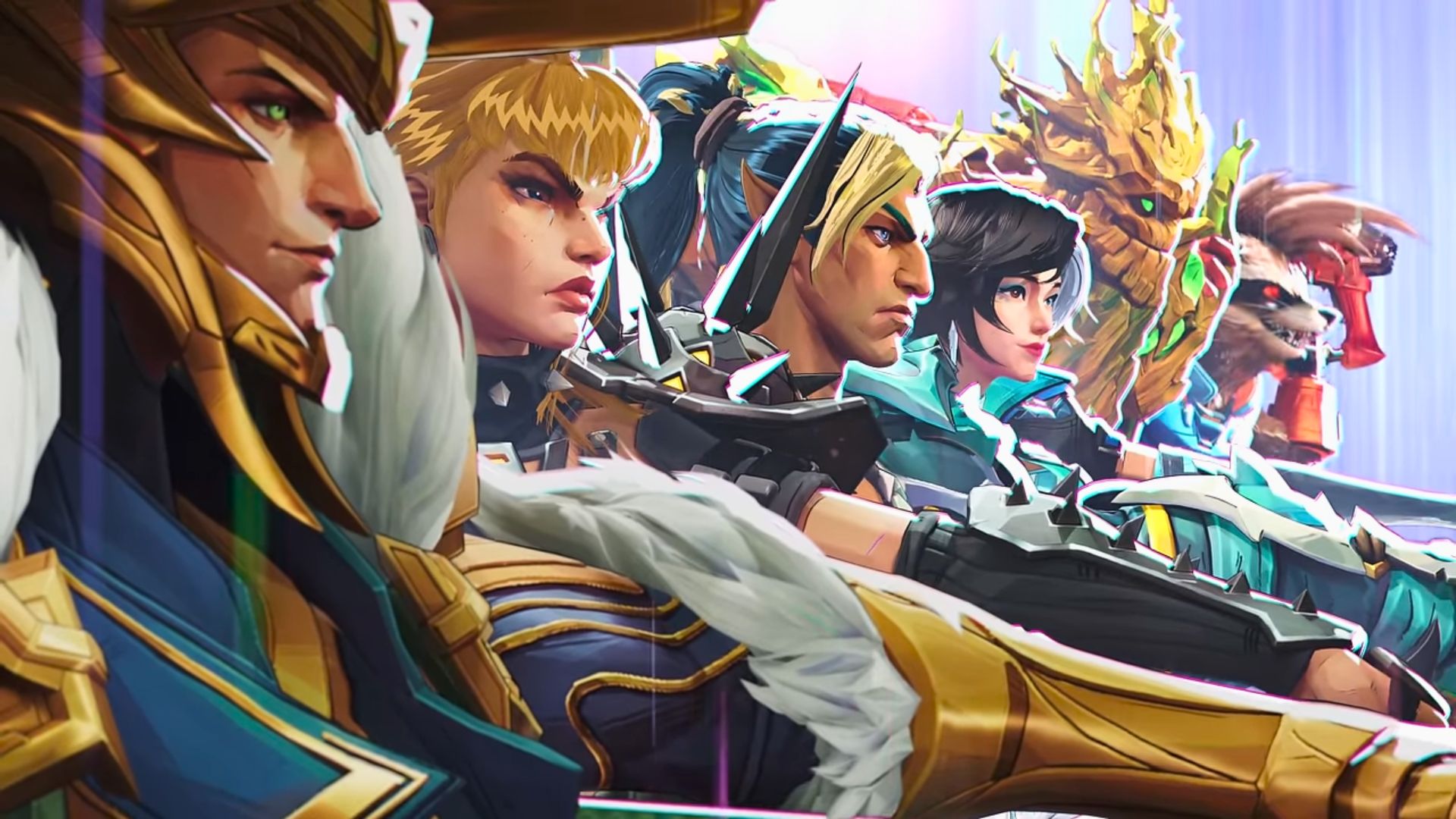
When is the Marvel Rivals release date? This 6-vs-6 shooter, developed by Netease and Marvel Games, looks set to be a contender to rival Overwatch 2 with Valorant art style, and varied gameplay. The game has now been officially announced and, despite leaks, there were still some surprises.
Marvel Rivals is being worked on by ex-Battlefield and Call of Duty developer, Netease, and aims to blend all the cool things from your favorite superhero games with the frantic fun of 6-vs-6 FPS games. Here's all we know so far on Marvel Rivals and when you can expect to get your hands on it.

Marvel Rivals has been building a lot of anticipation throughout the year so far. The upcoming multiplayer game has been shown off through both alpha and beta tests, garnering buzz in the process and hopes that it may be a new avenue for the kind of online play currently dominated by games like Overwatch 2, Valorant, and Team Fortress 2. When it would come out and how, exactly, it would handle access to its roster of Marvel superheroes, was an open question, though, which has just been answered thanks to an announcement from Gamescom's Opening Night Live.
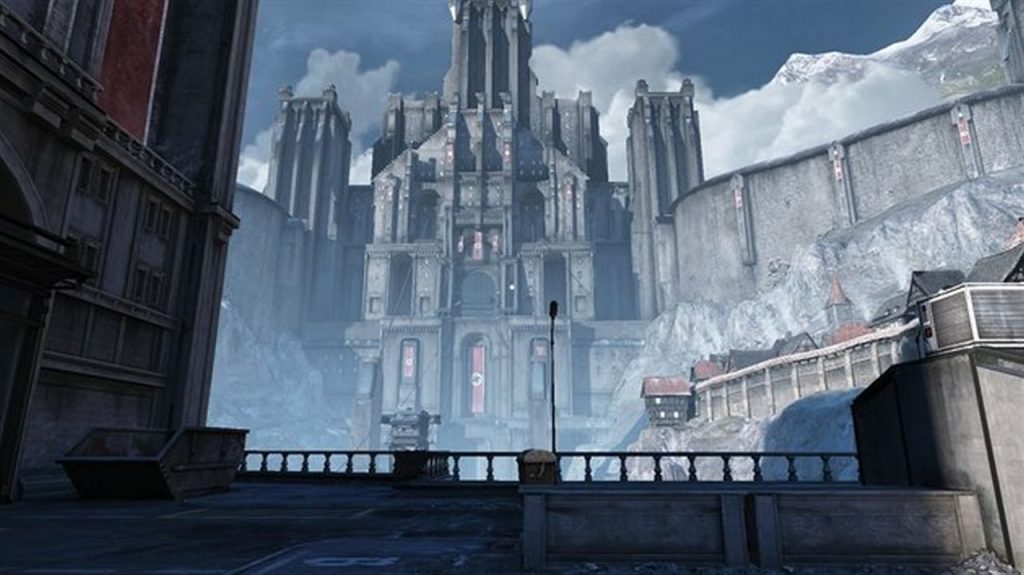
Title: Wolfenstein: The Old Blood
Type of Game: First-Person Shooter
Developer: MachineGames
Publisher: Bethesda Softworks
Released: May 5, 2015
Platforms Available: Microsoft Windows, PlayStation 4, Xbox One, Xbox Series X|S
Platform Reviewed: PS4
Level of Maturity: M (Mature) – Blood and Gore, Intense Violence, Strong Language
Reading Time: 7 minutes
“Did we need another generic dark Nazi robot shooter?” legendary developer Warren Spector (Deus Ex) sarcastically asked before the release of the cult successor to Wolfenstein a year earlier. As it turns out, we needed one. At a time when pseudo-realistic near-future conflicts, open worlds, constant cover behind obstacles, and one-shot deaths were most prevalent in action games, one would almost forget how easy it was.
The New Order offered straightforward brutal action with excellent level design, manual ammo collection, first aid kits instead of auto-heal, and of course, hundreds and hundreds of Nazis charging in front of the constantly-charged barrels of brilliantly designed weapons. All of this was supported by a properly B-movie story that took the player from concentration camps to a Nazi base on the moon.
The developers at Machine Games managed to brilliantly combine old-school gameplay with modern approaches, such as stealth arcades or elements from role-playing games, omitting unnecessary multiplayer support, and the result was a tremendous playable homage to the old genres. And as the name of the data disc suggests, it’s not about injecting fresh blood into the veins of the genre either. The new story means eight more levels of the same filler we’re used to from the last one. The few new weapons (the latest addition is a multi-functional steel pipe) and enemies should be worth mentioning. If a special edition of the game were ever released to tie the addition to the game, you’d be hard-pressed to find the moment when The Old Blood ends and The New Order begins.
The plot occurs before the original game’s events, specifically in 1946. B.J. Blazkowitz travels to Castle Wolfenstein to retrieve a secret file on General Deatshead. During your journey, you’ll look into other places and meet other bizarre characters, either friendly or at your throat. The inspiration from classic 80s B-movie flicks is undeniable. Yet, the story takes itself quite sympathetically seriously without constantly having to wink at the player as if now comes the joke.
But the main one is, of course, the mindless action again. The game’s perfectly working mechanics allow for a cautious approach, where you hide behind obstacles and gradually take out charging Germans who, in truth, haven’t picked up much artificial intelligence. Anyone who enjoyed the so-called nightmare-level quirk last time, which brought back memories of the original Wolfenstein 3D, will have more than enough fun this time. As a diversion, it’s good. I even remembered the location of some secret hiding places off the top of my head, and there was also the legendary boss with two rotary machine guns in his hands. However, completing all ten levels is only for the hardcore fans of this old classic, mainly because of the long, empty corridors.
It’s much more fun to meticulously search all corners of the map for hidden armor, then “overdose” on all the nearby first aid kits before a firefight, grab a rapid-fire shotgun in each hand and wipe out the Nazis at point-blank range. On the fourth difficulty out of five, I died compared to the original game, but the multiple solution options mean that repeating the same passages doesn’t fall into a rut. The sneaking passages and gradual learning of skills also remain, but nothing stops you if you want to ignore these “modern ideas” and focus on the constant shooting.
What’s new are the progressively unlockable arenas and closed maps, from which the game won’t let you out until you’ve shot everything that moves. Trophy hunters can return to these scenes and try to get the highest score. Otherwise, everything is focused on the single-player campaign, and multiplayer play will not be found here again. The Old Blood is not only a must for any fan, but the story takes place before the original game, which you don’t even need to play to start, making it the perfect way to jump into the new Wolfenstein for the first time. And if you’re interested in the game, you can read my other reviews of games in the Wolfenstein series, specifically those subtitled New Order, New Colossus, and Young Blood.
For around 15€, you get an average eight-hour shooter that doesn’t impress with story, graphics, or originality but instead focuses on the most essential thing: shooting. And while The New Order is one of the best games of 2014. That’s why this game has it a little more complicated in its shadow. I’d also give it a higher rating, but that would require The Old Blood to expand on the original experience more.
Steam (PC): Available for $19.99. You can purchase it directly from Steam.
Xbox Store (Xbox One): Available for $19.99. Check it out on the Xbox Store.
PlayStation Store (PS4): Available for $19.99. You can find it on the PlayStation Store.
Epic Games Store (PC): Available for $19.99. Purchase it from the Epic Games Store.
GOG (PC): Available for $19.99. Purchase it from GOG.
Subreddit: Join the discussion on the Wolfenstein Subreddit.
The post Wolfenstein: The Old Blood – Blazkowicz’s Blood-Soaked Prequel In Castle Wolfenstein appeared first on WePlayGames.net: Home for Top Gamers.
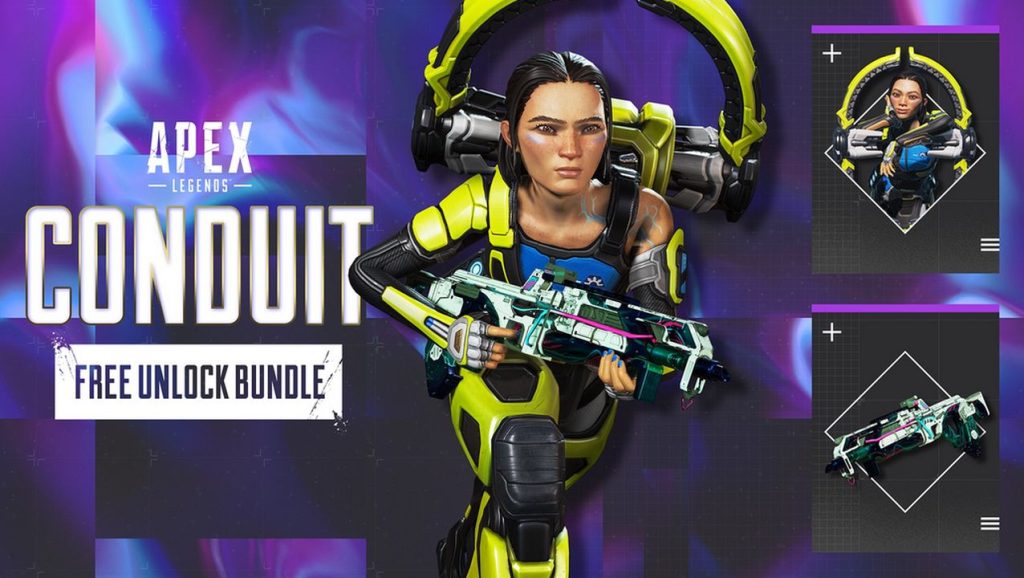
Article Reading Time: 3min
As a gaming enthusiast, I’m always on the lookout for exciting new content in the gaming world, especially when it comes to freebies! Apex Legends has consistently delivered thrilling action with its unique blend of hero abilities, smooth movement, and dynamic gameplay. Now, with Season 22 dropping, there’s even more reasons to dive into the action – grab the latest freebie from the Epic Games Store.

I’ve been digging into the Season 22 updates, and let me tell you, there’s a ton of fresh content to keep us all hooked. They’ve added a new Legend with some awesome abilities that’ll shake up our strategies. I can’t wait to see how the map changes and weapon tweaks affect the gameplay. And as always there is the battle pass – it’s loaded with exclusive skins, banners, and emotes as per usual.
To kick off Season 22, Epic Games is hooking us up with an awesome freebie. Here’s what you can snag:
Grabbing your freebie is a piece of cake. Just follow these steps:
Next time you fire up Apex, your new swag will be waiting for you.
I love free content drops like this. They’re a great way to spice up my gaming experience without spending a dime. Whether you’ve been dropping into Apex since day one or you’re just starting out, these skins are too good to pass up. Plus, rocking exclusive items like these is a great way to show off your Apex street cred.
Apex Legends Season 22 is pushing the envelope, and I’m here for it. This Epic Games Store freebie is the perfect way to kick off the new season in style. Don’t sleep on this opportunity – head over to Epic and claim your goodies today. I’ll see you in the arena, Game on!
Keep an eye on the news section of our page for more content like this!
The post Unleash Epic Content in Apex Legends Season 22: Don’t Miss This Freebie! appeared first on WePlayGames.net: Home for Top Gamers.
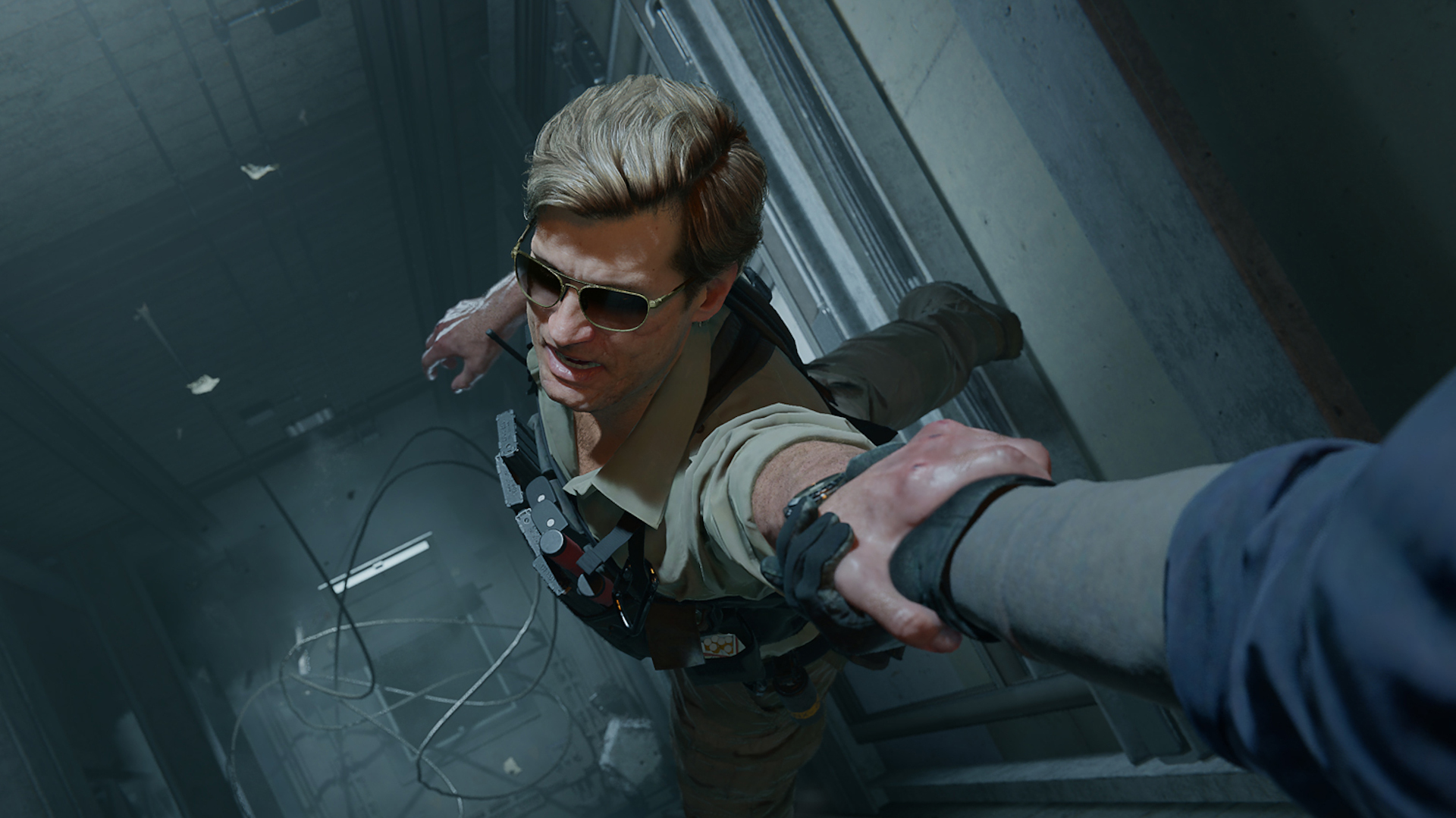
Follow the Call of Duty series long enough and you'll recognize exactly the place we're in with Black Ops 6: The game is revealed, we know one major change coming to multiplayer (sprinting in any direction), and now it's time for the campaign. Activision debuted six minutes of campaign gameplay at Gamescom Opening Night Live with a standard CoD dose of stacking up on doorways, shooting at a big armored guy with a minigun, and riding on the back of a vehicle while more shooting happens.
Looks as fun as any Black Ops campaign, and it'd be hard to do any worse than the disaster that was Modern Warfare 3's story, but let's be honest: We're gonna forget all about Adler and his gang of executive branch-approved buds as soon as the Black Ops 6 campaign is over. I can't think of a series for which the singleplayer portion of a game is less consequential. What CoD players spend 99% of their time on, and what we still know little about, is multiplayer. Treyarch's lips are sealed on that front until the CoD Next event later this month.
That's not to say we shouldn't be enthusiastic about another Blops story. Sure, CoD has gotten so used to repeating itself that anyone could've predicted that elevator shaft would somehow blow up as they were hanging from those cables, but I enjoy my yearly check-in with the big-budget FPS campaign. We don't get many of those anymore, and while CoD's stories only seem to be getting shorter with time, the Blops games usually manage one or two genuine surprises, like Cold War's complex Kremlin infiltration mission.
I just don't think we should pretend the Blops 6 campaign matters. People used to say that Activision only makes Call of Duty campaigns so it has a bunch of exciting set pieces to cut trailers with, and I think that feels true now more than ever. Activision has so many coals in the fire with this series—multiplayer, zombies, Warzone, mobile—that there's a sort of unspoken understanding in the community that campaigns are just a fun little appetizer for the real game. When they're good, they set the tone nicely for our next hundred hours of multiplayer. When they're bad, you can't help but wonder if singleplayer CoD should finally throw in the towel.
Black Ops 6 is out October 25, but the full multiplayer reveal and beta kick off at the end of the month: August 30 to September 4.

© Activision Blizzard
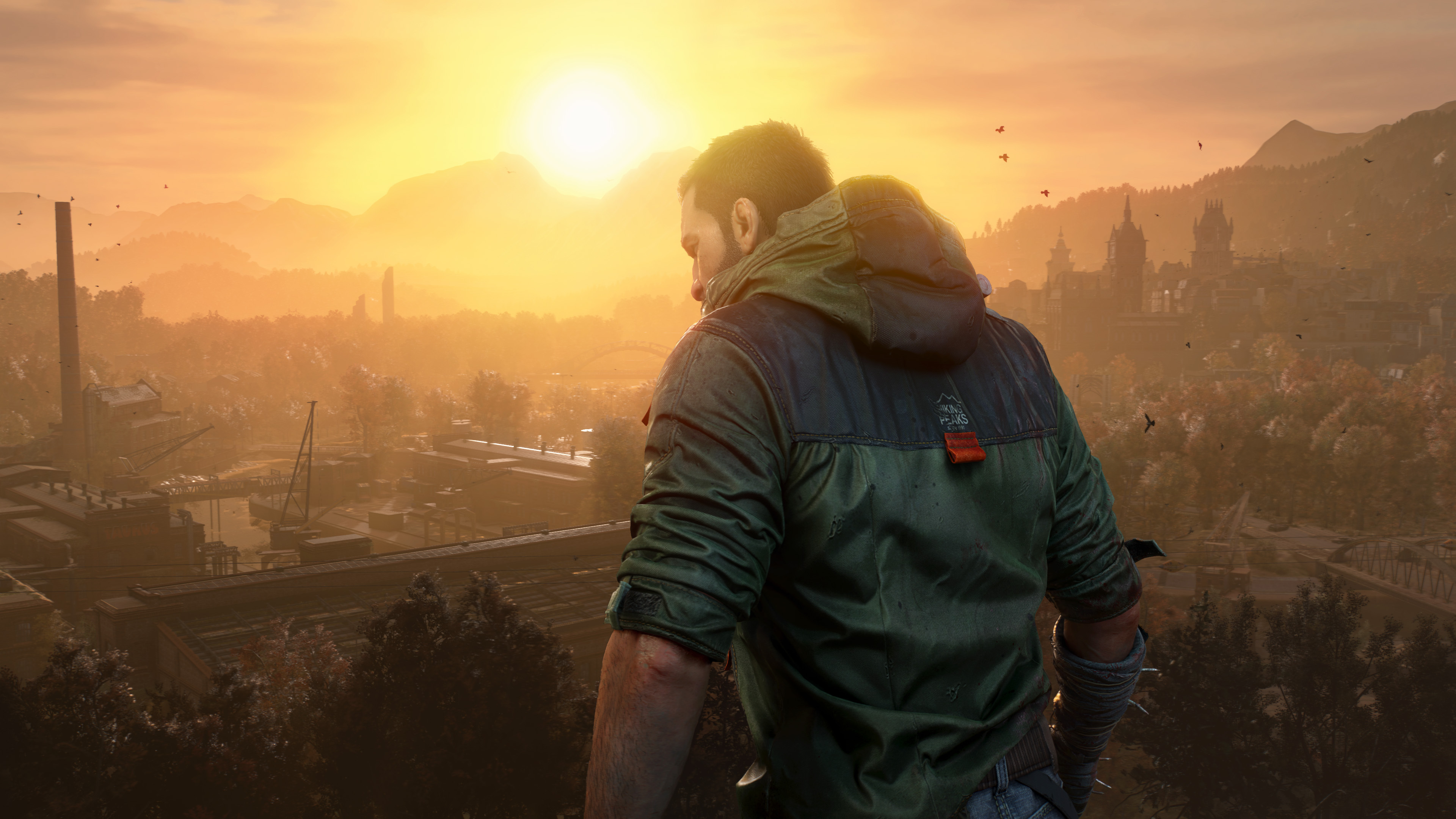
Techland announced the next game in the Dying Light series today at Gamescom's Opening Night Live. It's called Dying Light: The Beast, and it takes place about a decade after the original game and before the events of Dying Light 2.
It also brings back Kyle Crane, the main character of the original Dying Light—though he didn't live happily ever after. Speaking to PC Gamer, Dying Light franchise director Tymon Smektala laid out the story that starts with Crane, after being held captive and experimented on for over a decade, escaping and seeking revenge.
"Half-jokingly, you could say that this is basically like the movie Old Boy's premise, but with zombies," Smektala said.
You may remember some buzz back in 2022 around Techland saying Dying Light 2 would take 500 hours to fully complete, and the natural skepticism that came along with that claim. According to Smektala, The Beast doesn't have those kinds of aspirations.
"It's going to be basically a fully fledged open world adventure in the world of Dying Light, very similar to Dying Light 1 or Dying Light 2, though slightly more compact," Smektala said. "My favorite joke about it is that it is like a double espresso, because it's short, but super powerful, and full of everything that Dying Light does best." Smektala said he expects the main story to take around 10 hours to complete, adding that "it all depends on your gameplay style. There's lots of additional content [and an] environment that's very unique, full of secrets."

As for Crane's beast powers, Smektala didn't want to reveal too much at this stage. Crane will have a new skill tree that will "make Kyle more than just a human," allowing him to "traverse more effectively, jump higher, run faster," is all he was willing to say.
Dying Light: The Beast was originally intended to be DLC for Dying Light 2: Stay Human, but after two years of development Techland decided it was big enough to be its own standalone game. It will be free to owners of Dying Light 2: Stay Human Ultimate Edition.
The new game also won't mean the end of support for Dying Light 2. "We have promised that Dying Light 2 will be supported for five years, and we are sticking to this promise," Smektala said. "We still have some updates planned for this year."

© Techland

Techland just announced the next game in the Dying Light series at Gamescom's Opening Night Live. It's called Dying Light: The Beast, and it's set between the events of Dying Light and Dying Light 2: Stay Human. It also marks the return of Kyle Crane, hero of the original game, voiced once more by Roger Craig Smith.
Even at a quick glance there's a few interesting things to discuss about The Beast. First, it actually began as DLC for Dying Light 2, but grew so big Techland decided to turn it into a standalone game. It's also set in a place called Castor Woods, a "once-bustling tourist destination" that's been overrun by zombies. You're leaving the densely packed city behind and going rural in this one.
"Featuring natural landmarks, small villages and industrial complexes, the setting offers diverse traversal options, whether it's using your parkour skills to gain the upper hand on your enemies or hopping into an abandoned 4x4 to outrun the horrors of the night," Techland said.
The presence of a vehicle and the more rural environment makes me think of The Following, which was an expansion for the original Dying Light that took place outside the traditional urban landscape of skyscrapers and office towers. I thought it turned out pretty well, with driving and exploration providing a refreshing change of pace after the non-stop running, clambering, and climbing of Dying Light. Instead of just kicking and bashing zombies, you could run them over at top speed. That was a thumbs-up from me.
If you're wondering who the titular Beast is, well… it's you. After Dying Light, Crane was subjected to "years of brutal experimentation" on his DNA, leaving him able to "unleash a beast-like power" on the zombie hordes. Dying Light: The Beast will be playable in co-op by up to 4 players, or in this case, 4 beasts.





Originally planned as DLC, two years into its development "its size and scope has changed so much that it evolved into a standalone, self-contained experience," said Techland. "To show appreciation
for the community who patiently waited for the DLC, Techland will be offering Dying Light: The Beast at no extra cost to all owners of the Dying Light 2 Stay Human Ultimate Edition, delivering a full standalone adventure instead of just a DLC." For those who don't own that edition, pricing has not yet been announced, nor has a release date.
We've got a bit more information about Dying Light: The Beast for you, thanks to our exclusive interview with Dying Light franchise director Tymon Smektala.

© Techland
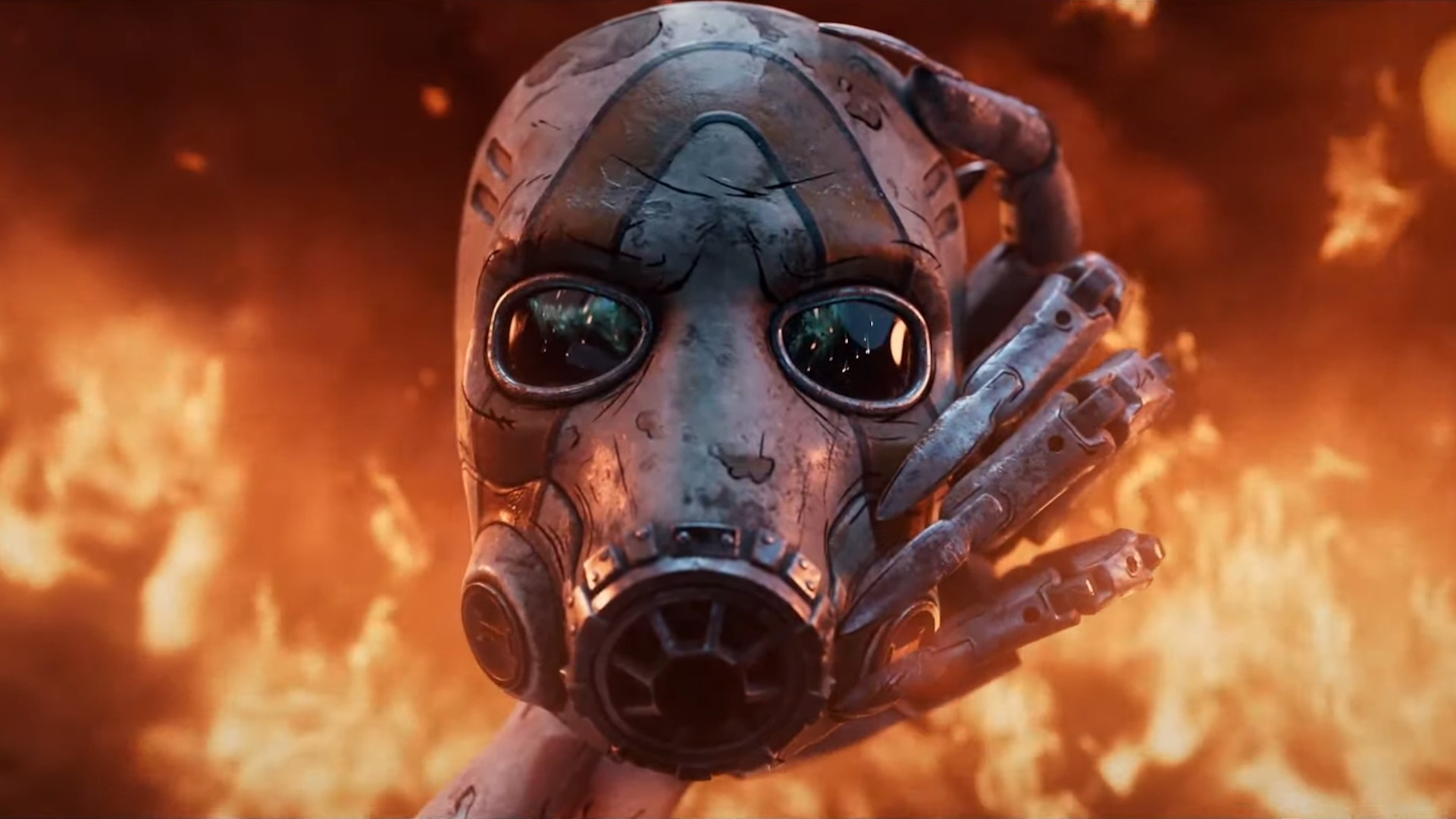
One of the worst-kept secrets in videogames was finally confirmed tonight at the Opening Night Live showcase at Gamescom: Borderlands 4 is in development, and it's set to arrive in 2025.
No gameplay was revealed in the trailer, or much of anything else really, but that's definitely Borderlands. And while we didn't know the game would be revealed at Opening Night Live, it's not entirely a surprise. Gearbox boss Randy Pitchford said in June, "I don't think I've done a good enough job of hiding the fact that we're working on something … And I think people that love Borderlands are going to be very excited about what we're working on."
The Borderlands 4 Steam page is already live (it's also coming to the Epic Games Store, but isn't listed there yet), and while it doesn't have much to say about the game—"See if you have what it takes to go down in history as a legendary Vault Hunter as you search for secret alien treasure, blasting everything in sight," which is par for the course for Borderlands—you can at least smash it onto your wishlist.
"The team and I at Gearbox have a lot we’ve wanted to do with Borderlands since we first introduced the looter shooter genre to the world with our original game," Pitchford said. "All of us at Gearbox have massive ambitions for Borderlands 4 and are putting everything we have into making everything we love about Borderlands better than ever before while taking the game to new levels in exciting new directions."
So, there we have it: It's happening! We'll keep our eyes open for details and share more when we have them.

© Gearbox Software
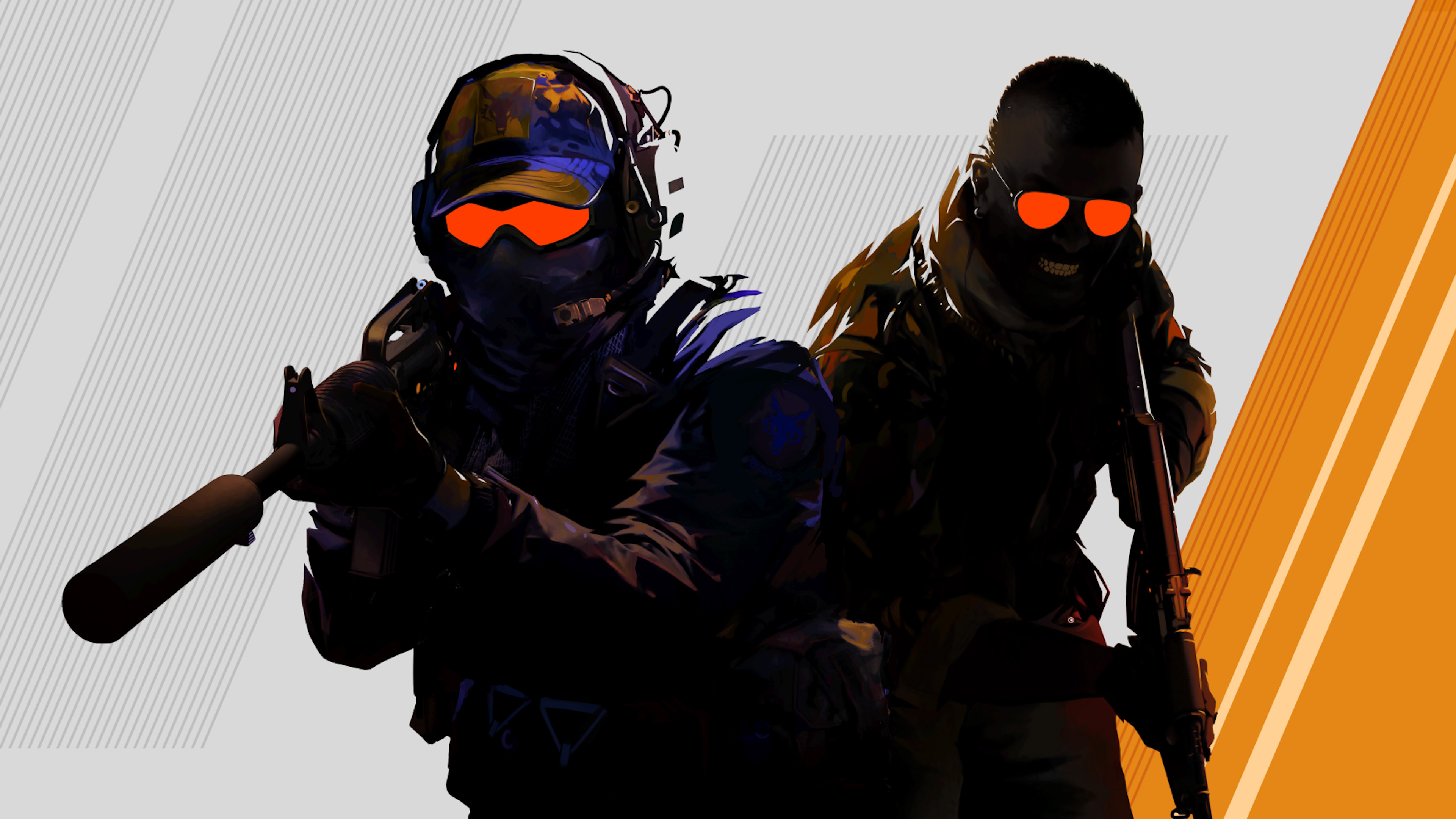
Valve has made a bold decision with its latest update to Counter-Strike 2, and one that is something of an about-turn on previous attitudes. A client update has announced certain forms of scripting popular in Counter-Strike will now be detected and banned, essentially putting an end to automated inputs that some players use for actions such as jump-throws of grenades and counter-strafing. Yes sir, the tears are delicious.
A good chunk of Counter-Strikers probably don't even realise such tactics existed, but keyboard macros of various types have been around in the game forever. In fact Valve's previous stance was to allow them. But contemporary hardware has increasingly leaned-in to allowing what's called Simultaneous Opposite Cardinal Direction (SOCD) inputs, a name so catchy that hardware manufacturer Razer has dubbed the feature "Snap Tap", and it's been a major controversy across all competitive games.
Here is a full explainer of how SOCD / Snap Tap works, particularly how it relates to counter-strafing in competitive Counter-Strike, and why that might be a problem. The short version, however, is that it makes a core skill of the game (stopping to shoot accurately while moving) trivially easy to execute.
So Valve has come out hard, and said this shit is no longer going to fly. As someone who plays the game normally I'm all in favour of automated assists being banned, and the top-voted comment on the CS2 subreddit goes along similar lines. "Valve has taken a standpoint," says TheZeroStone. "The end of tool assisted gameplay, as someone who doesn’t use any keybinds and have been relying on my natural inconsistencies, I am happy."
Here's the official word from Valve: "Certain types of movement/shooting input automation such as hardware-assisted counter strafing will now be detected on Valve official servers, resulting in a kick from the match." It goes on to list certain input binds that will now be ignored by default, and for good measure adds that the grunt when you jump and throw "can now be heard by other players nearby."
One thing I will note is that the kind of grenade throws this is talking about are pretty high-level. From the Terrorist spawn on Mirage, for example, you can toss a smoke grenade into the window on mid typically occupied by a Counter-Terrorist, completely obscuring their vision and allowing the T side to push at round start. You can still execute that throw. But it's tough, and you're not going to be able to do it without practice: as opposed to pressing one button on your new Razer keyboard.
And now you understand this meme:
window players after new update be like from r/cs2
As well as the in-game notes on the change, Valve has published a longer blog post about its decision.
"Counter-Strike is constantly evolving," writes Valve. "From art, to maps, to inventive plays, and even player input, the CS community shapes the game.
"Scripting and automating player commands has always been contentious, but over the years some forms of scripting (e.g., jump-throws) have gained acceptance, as they enable plays that wouldn't otherwise be possible. In fact, jump-throws became such an important part of the game that we've done the work to make them reliable without any special scripting or binds (i.e., by jumping and quickly throwing a grenade).
"Developing one's coordination and reaction time has always been key to mastering Counter-Strike. Recently, some hardware features have blurred the line between manual input and automation, so we've decided to draw a clear line on what is or isn't acceptable in Counter-Strike.
"We are no longer going to allow automation (via scripting or hardware) that circumvent these core skills and, moving forward, (and initially--exclusively on Valve Official Servers) players suspected of automating multiple player actions from a single game input may be kicked from their match."
It adds that if you have a keyboard with "Snap Tap" functionality then you'd best disable that feature before playing Counter-Strike 2 again, or your ass is grass and Gabe's bringing the lawnmower. Maybe not those exact words, but you get the picture.
As if all of this wasn't exciting enough, Valve ends by briefly addressing the #1 complaint on every Counter-Strike forum ever in the history of Counter-Strike: cheating. This is a bit of a tricky topic, because Valve through Valve Anti-Cheat is constantly battling cheaters and cheat-makers, and regularly executes large ban waves, but it's a never-ending battle and elements of the playerbase think that Valve does nothing or doesn't care.
The truth is Valve is fighting a war with no end, and one it can't talk about. It can never detail what it's doing to combat cheaters, except in the broadest and vaguest terms, because even the tiniest hint about what it's up to is a potential gift to the cheat-makers. Nevertheless, prepare yourself for some magic words:
"Initial testing of VacNet 3.0 has begun on a limited set of matches."
VAC 3.0 is here, and it's being tested out before being rolled-out to the entire community. What exactly makes this iteration of VAC worthy of that 3.0 designation? I doubt anyone outside of a certain Seattle office building will ever know, but what we do know about VAC 3.0 is it's capable of responding in realtime to player complaints, and making near-instantaneous decisions about kicking players and cancelling matches.
Whether it makes a serious dent in the cheating army remains to be seen, but hey. At least now when someone outshoots you, you know for sure it wasn't Snap Tap.

© Valve
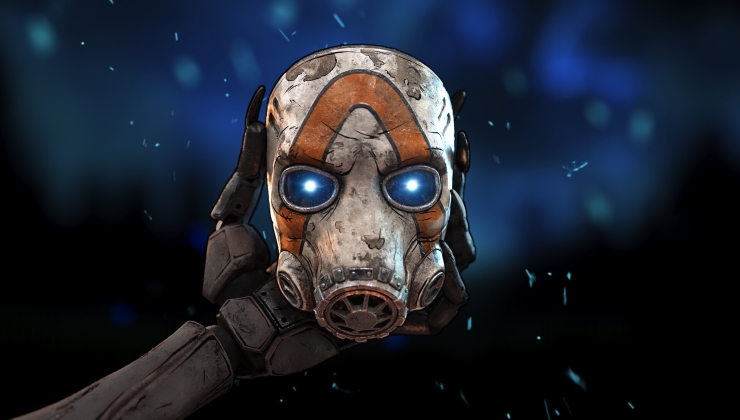
![]() .
.
Read the full article on GamingOnLinux.
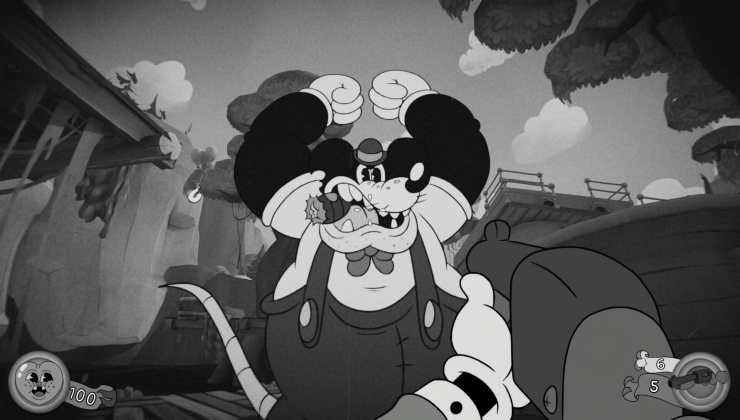
![]() .
.
Read the full article on GamingOnLinux.
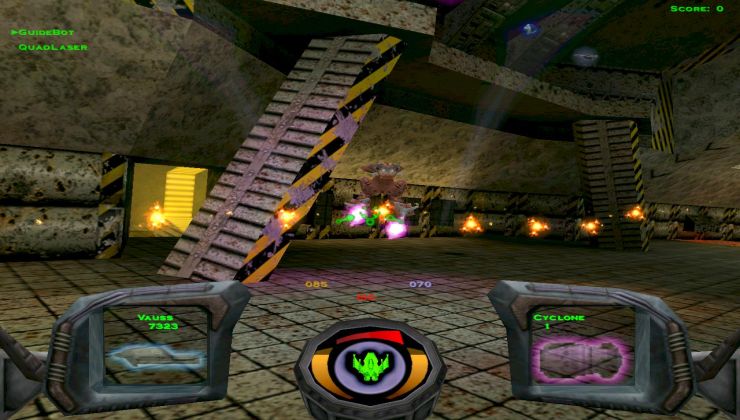
![]() .
.
Read the full article on GamingOnLinux.
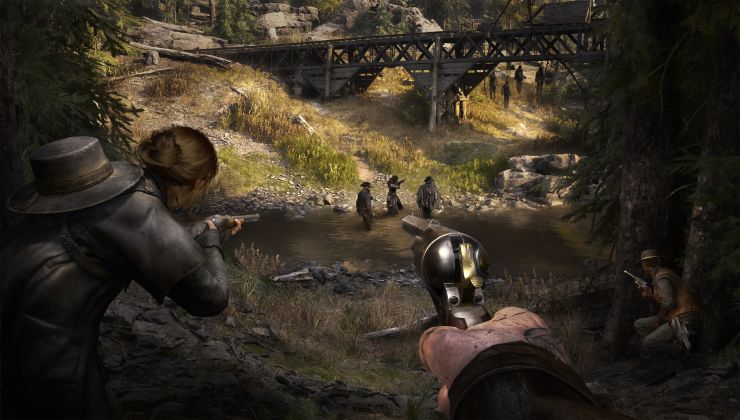
![]() .
.
Read the full article on GamingOnLinux.
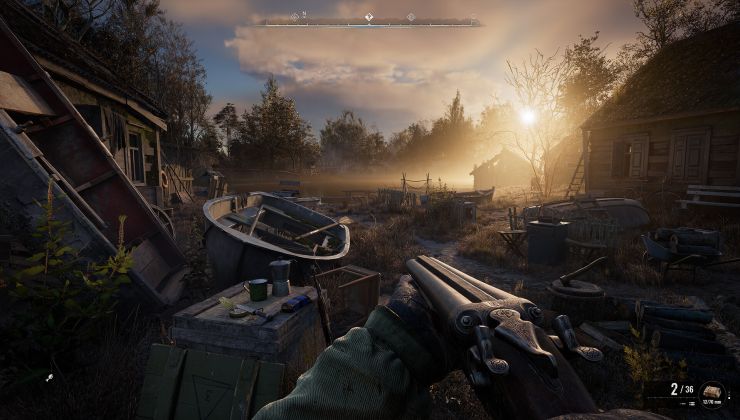
![]() .
.
Read the full article on GamingOnLinux.
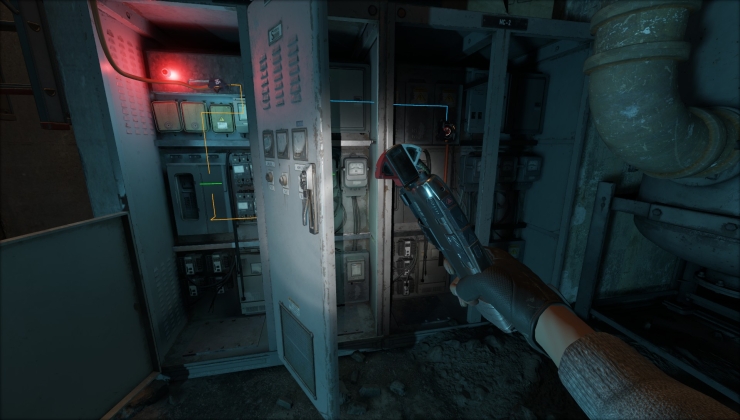
![]() .
.
Read the full article on GamingOnLinux.

Nuclear terror returns as an issue thanks to events during Ukraine's conflict and attacks against Chernobyl plant installations, prompting gamers to recreate scenarios revolving around them in this console game. Chernobylite is a first-person shooter at its core but it also has developed an important RPG base. Some label it as a hybrid, but I still believe it is a shooter-first video game. Stealth plays a role but shooting is the bread and butter of gameplay. The essence of the video game lies within its "mission completed, find materials, return to base - create something" cycle. If cyclical patterns appear boring to you, that may not be what this game offers you - at least not initially!
Though an aesthetically appealing game, do not expect Horizon Forbidden West or similar open-world titles that take your breath away. While improvements have been made here there are visible increases in terms of atmosphere and lighting inside interior environments. It was compared with Fallout, Horizon Forbidden West, Wasteland 3, and more. There are commonalities but it is a safe assertion that Chernobylite is pretty different and if you're in the marketplace searching to buy PS4 shooting games, your search stops here. Technical improvements over earlier versions are obvious, with no deficiencies in terms of graphics and speed that make the game title appear more appealing compared to its counterparts on PS4 and Xbox One.
Chernobylite can reach 4K resolution at 30fps using PS5 graphics mode, providing Ray Tracing as well as enhanced textures and shadows; performance mode increases this resolution to 1080 px at 60 fps, boasting excellent graphic quality. Typically, objects and environments in PS5 tend to appear more realistic in terms of lighting effects such as shadowing and shadows than they do on PS4, although we must emphasize that we played it through on its version on PS5 for comparison purposes. One aspect that stuck out was how developers had to make compromises for Chernobylite to run properly on this specific hardware platform - not bad but certainly nothing that looked vibrant or polished.
As soon as the PS5 version of my console game launched, my eyes were amazed to witness its superior graphics fidelity. Jagged edges that existed on previous generations of hardware no longer existed on PS5, while shadows provided for every leaf or blade of grass within their individual shadow. It's not surprising that if you buy PS5 games you'd prefer this version to the PS4. It is a good thing that developers offer free upgrades from PS4 to PS5 versions, so nothing is lost. There is much to appreciate in this collection; from its brilliantly designed systems that adapt easily, to fantastic vocal acting in English; to simple scavenging procedures like looking around your area for signs of fungal infection until collecting said fungal growth; everything here makes for an engaging adventure!
Overall, Chernobylite is an excellent shooter, and no matter what device you play, the good parts are much more important and will offset the bad parts. Particularly, I believe that is one of the top choices in the first-person shooter category for players who buy PS4 games. With modern hardware, immersion increases to such an extent that I no longer recommend any other means for playing Chernobylite; using modern hardware simply enhances this experience further. Though glitches do still occasionally arise, the major ones no longer pose as much of a hindrance compared to before. One such instance was when switching from inside structures into open-world zones where frame rates drastically dropped when transitioning out of structures into them; that issue no longer arises.


Wear your best attire against radiation exposure as we embark on an adventure that blends survival, management, and RPG elements with first-person action gameplay and supernatural elements - with Chernobylite now 4 years after its initial release, is still worth it? We look forward to sharing more about this underappreciated shooter game in our review... If you want to find out what I was thinking about this shooter when it was released, I suggest you read my previous review: Chernobylite - You Have to Survive in the Exclusion Zone. I did not change my views, but the rant about the developers is irrelevant now. Reviews belong to their time and moment, this is why I revisit the game today.
Chernobylite can best be described as an action RPG that combines shooter elements with base building/team management. While this combination might seem unlike anything you would typically play on PlayStation 4, I can honestly attest that at minimum it works extremely well together to keep you engaged for hours on end! Chernobylite is made for shooter players looking to buy cheap PS4 games. While its PlayStation 5 performance may occasionally not meet expectations (with occasional frame drops from time to time and loading times that range up to 20 seconds max), its excellent mind management properties more than makeup for its limited consistency when played in Performance Mode and loading time that ranges up to 20 seconds max!
Scrap metal is a great source of scrap and various other metals as we leave the base (electronic elements or fuel ...), from Chernobylite we can create various kinds of items and work tables, ranging from simple kitchens in which we can cook some meals and prepare medicines and tables that are specifically designed for crafting or upgrading weapons such as traps, ammunition or even armor. A mission that is soon put to waste due to the appearance of the mysterious Stalker who can kill one of Igor's fellows and hurts another. However, Igor gets some Chernobilite the bizarre substance Igor had been looking for, and permits opening "wormholes" to allow the transport to different areas.
Chernobylite excels as a narrative experience because its branching storylines allow players to make crucial choices that impact not only themselves but also other characters as they search for their missing fiancee. To me, if you buy PS4 shooting games in 2024, Chernobylite is a no-brainer. From choosing companions and resource allocation decisions to dialogue choices that change outcomes - your decisions in Chernobylite's branching story provide endless ways for outcomes to change the game!
Chernobylite puts our readers into the shoes of Igor, an engineer at the Chernobyl power plant who, upon receiving mysterious images from his deceased wife who vanished after its explosion thirty years prior, decides to return back into work at its site. Survival in Chernobyl is not simply about physical survival - it also takes an emotional toll. Nuclear terror reemerged during Ukraine's conflict when attacks against Chornobyl's facilities occurred, leading to more speculations surrounding the nuclear disaster. This title brings this topic front and center.
In my opinion, that may be a little skewed in favor as I enjoyed this game, Chernobylite is among the best PS4 games you can buy in the first-person shooter space. The gameplay in The Zone itself is captivatingly entertaining: Resource management becomes paramount as you scour for materials to craft equipment to tackle its anomalies and hostile factions; combat is fast-paced but focused around tactical approaches utilizing the environment as you target enemy positions; it is never about mindlessly shooting at foes; each bullet counts. Furthermore, the base building adds another level of strategy, permitting crafting gear, researching upgrades, and forging alliances between survivors, all while the countdown to each mission ticks away inexorably.

Developer: High Moon Studios Publisher: Capcom Release: Genre: FPS When Halo hit the market it hit big. It took the ball that Goldeneye established and ran with it and is probably the most important first person shooter released in the...
The post Darkwatch appeared first on Classic-Games.net.


HIGH I just love the title.
LOW The boss fights.
WTF Kicking an anthropomorphized brain in the testicles.
Anger Foot isn’t subtle… though with a title like that, I don’t think anyone should expect nuance.
A bizarre ménage à trois between Hotline Miami, Boogerman and John Wick, Anger Foot is a first-person kicker/shooter that blends improvisational gunplay, high flying footwork and scatological humor. While it may not reach the heights of its inspirations (except for Boogerman — it’s definitely better than Boogerman) when it’s firing on all cylinders it can be a hell of a good time.
Planning a night in with his significant other, the titular Anger Foot’s plans are interrupted as gangs break in and steal his prized sneaker collection, and one can easily surmise that this is no laughing matter. Soon enough, I am storming through the apartments, sewers and nightclubs of Shit City (yes, that’s really what it’s called) in pursuit of my wayward footwear.

Who needs doorknobs when an angry foot will get the job done just as well? In lieu of a traditional “use” button, I can mash the “E” key to kick down doors and send adversaries flying. Grabbing limited-ammo guns as I go, a typical scene might have me draining the clip of a nearby machine gun before whipping it across the room to stun a bat-wielding, humanoid crocodile. I can then pivot and send a kick to the gut of what appears to be Grover from the wrong side of Sesame Street. As he sails through the air, grab his falling pistol and headshot the still-reeling crocodile.
Things move fast in Shit City, and death comes easy. While no level takes more than five minutes to complete, Anger Foot proves to be as fragile as the opposition, and his rage can be permanently calmed with a bullet or two. As such, it was rare that I could clear a stage on my first attempt, but blessedly short load times allow for rapid iteration, and there was a satisfaction in finding my perfect line through each map, slowly but surely landing every kick, headshot and jump, anticipating enemy movements and dancing my way to the exit.
This repetitious try-and-die nature of this design is clearly intentional. Completing each level under certain conditions unlocks stars that can be redeemed for new foot gear such as a new pair of stilettos, sandals or galoshes, each of which grants new abilities — things like making enemies explode when kicked, or enabling a double jump. Some are more context-specific, like granting immunity to fire — especially handy as the enemies up their arsenal to include flamethrowers in later stages. My personal favorite was a pair of sneakers that would slow down time when I kicked in a door.

Given levels’ general linearity, there is a surprising amount of room for player expression between alternate paths and the spontaneity of combat. Choosing when and where to pick up a shotgun versus a pistol, and when to send the empty gun flying across the room to stun an enemy is just as meaningful as which shoes I pick at the beginning of each stage. It feels as though I’m carving my own path through each area rather than following a prescripted route and method.
There’s also variety in the level design — in the first half of the campaign, at least. Starting out, each of Anger Foot’s stages feels as though it has a unique concept. In one, a sniper is perched and taking shots from afar – unable to reach my assailant, I must be in constant motion to avoid their aim. In another, I’m leaping across pipes in a cavernous sewer fighting an army of tentacles. With enemies being stationary, there is a clockwork, rhythmic precision to my movements as I take shots before they even appear, anticipating their presence.
Unfortunately, while I can clearly remember many of the early sections, later stages begin to feel more indistinct thanks to generic hallways and fewer mechanical differentiators as the developers come to rely more and more on the volume of enemies. There’s certainly an adrenaline rush in taking down a room of thirty foes, but Anger Foot loses the sense of flow and tempo that characterizes its first half.

Furthermore, the multi-phase boss battles that conclude each area feel out of place and frustrating. These fights, with an emphasis on timing and waiting for precise moments to attack, lose much of the dynamism that highlights the rest of the experience. The worst offender introduces a mandatory parry mechanic, requires memorization of attack patterns, and takes place in a restrictive arena over toxic sludge where one small misstep means restarting the fight from the beginning. These more prescriptive encounters seem to forget the fluid, freeform combat that made the preceding stages so engaging.
As mentioned earlier, there’s obviously an element of humor to the proceedings, and it doesn’t take long to realize that Anger Foot doesn’t take itself terribly seriously. However, beyond the baseline absurdity of the premise, the developers might be trying a bit too hard to make players laugh. I’m no stranger to puerile humor, and I’d be lying if I said I didn’t crack a smile the first time I burst into a bathroom to find a surprised enemy, pixelated genitals and all. However, by the time I reached the end and had seen this same gag countless times, it began to lose its luster. Anger Foot is funny on a conceptual level, but the overt, repeated attempts at humor feel like selling past the close.
Anger Foot is at its best in motion. Falling into a hallway hypnosis of garish ’90s aesthetics and murderous footwork, I don’t have to think — I just react. It’s when I’m forced to slow down and hear a joke or fight a boss that requires pauses in the pace that I begin to notice the seams. While these moments aren’t dealbreakers, they’re unfortunate stumbles in an otherwise sure-footed experience.
Rating: 7.5 out of 10
— Ryan Nalley
Disclosures: This game is developed by Free Lives and published by Devolver Digital. It is currently available on PC. This copy of the game was obtained via publisher and reviewed on the PC.
Approximately 10 hours of play were devoted to the single-player mode, and the game
was completed. There are no multiplayer modes.
Parents: While this game has not been rated by the ESRB, it is certainly not intended for younger audiences. Anger Foot contains violence, blood, sexuality, nudity, vaping and crude humor. While this content is presented in a cartoony manner, it is pervasive.
Colorblind Modes: There are no colorblind modes available.
Deaf & Hard of Hearing Gamers: This game offers subtitles. The subtitles cannot be altered and/or resized. Most audio cues have on-screen indicators. However, there are some enemy barks that can give away an enemy’s position that are not represented visually. Therefore, this game is not fully accessible.

Remappable Controls: Yes, this game offers fully remappable controls.






HIGH The soundtrack is genuinely excellent.
LOW Poorly designed levels.
WTF Commiting to the bit makes it a difficult game to review!
One of the strongest (and most surprising) games I’ve reviewed for GameCritics has been Hypnospace Outlaw, which was set in a parody version of 1999’s early internet. It resonated with me in a big way due to its setting, but the developers were also commenting on the toxicity of contemporary social media — which, if anything, has gotten worse since its release. When I saw there was a recent spinoff, I had to see what they’d do with it next.
Slayers X: Terminal Aftermath: Vengance of the Slayer is a ’90s style first-person shooter developed by Tendershoot and published by No More Robots.
In Slayers X, Zane, the incredibly obnoxious 15-year-old troll from Hypnospace Outlaw, is now a grown man in his mid-thirties. He’s decided to continue working on a half-done videogame he stopped making in his teen years, and “Slayers X” is that game. This game-within-a-game stars Zane, who is part of a superhero group called the Slayers. His fictional persona is seeking revenge for the murder of his mentor and mother by a rival group headed by Zane’s stepfather.

This story hints at what one might expect from the mind of an obnoxious teenager, and in this respect, Slayer X commits to the bit. This thin plot is just a setup for a power fantasy that invokes Doom and Duke Nukem. The story is ridiculous and replete with awful one-liners where Zane mocks enemies by saying things like “I slept with your mom!” Complete with poor CG between levels, the overall quality of the experience is surely a series of deliberate choices by the developers to remain consistent with the premise.
Additionally, gameplay has a familiar smoothness and speed typical of shooters from that era, complete with exaggerated head bob. The shooting is exactly what one would expect, offering simple shooting in levels filled with enemies. The guns feel common, though the Glass Blaster shotgun packs a punch and is the exception, due to its ability to use broken windows as ammo refills.
However, Slayers X is also seemingly filtered through the prism of someone lacking in the talent department when it comes to game design. The areas lack flow — I often found myself lost among many seemingly pointless areas and diversions lacking tangible rewards for exploration, aside from some predictably poor and immature visual gags. This resulted in a stop-start feeling not helped by the prevalence of monster closets and waves of spawning enemies.

Speaking of enemies, they lack interesting designs and are repeated ad nauseam. When the difficulty needs to ramp up in the final levels, the classic design mistake is made — the enemy count skyrockets and stronger enemies become too plentiful.
To make matters worse, ammo was inconsistently and haphazardly placed. I sometimes found myself with an overabundance, but at other times — especially when it was needed the most — it was hard to come across.
Again, while this was not a pleasant experience per se, I want to reiterate the admiration I had for the developers’ commitment to their concept. It is through this authenticity that Slayer X shines — it’s not really a ‘bad’ FPS, but instead a character piece reflecting the mind of a juvenile edgelord and his views of the world. This meta-concept is where Slayer X finds its humor, in exposing his illusions of grandeur and not in Zane’s terrible zingers.

While the concept behind Slayers X might spark debate, there’s no argument around the soundtrack, where the parody band “Seepage” returns from Hypnospace Outlaws. Clearly inspired by late ’90s bands like Linkin Park, tastes may vary here (and I’m exposing my own nostalgia) but I genuinely found the songs not just pitch-perfect throwbacks, but enjoyable in their own right.
Considering its premise, it would be betraying the concept to make a ‘good’ game. It’s certainly interesting, but does that lead to an enjoyable experience? Well, it’s worth playing for those who enjoyed Hypnospace Outlaw and are interested in another snapshot from that period, and it’s brief enough so that it doesn’t outstay its welcome. However, people who aren’t Hypnospace fans or those who aren’t interested in the meta-concept would probably do well to look elsewhere if they’re craving a standard FPS fix.
Rating: 6 out of 10
Disclosures: This game is developed by Tendershoot and published by No More Robots. It is currently available on XBO, XBX/S, PS4/5, Switch and PC. This copy of the game was obtained via publisher and reviewed on the Switch. Approximately 3.5 hours of play were devoted to the single-player mode, and the game was completed. There are no multiplayer modes.
Parents: According to the ESRB, this game is rated M and contains Intense Violence, Blood and Gore, Sexual Themes, Drug Reference, and Language. Whilst the graphics are deliberately primitive, the game is very violent with exploding limbs and lots of blood, although the prevalence of blood depends on whether the violence level is set to normal or extreme in the settings. There are references to suicide, drugs and crude humour such as sexual innuendo, for example, the player character saying he has slept with someone’s mom.
Colorblind Modes: There are no colorblind modes available.
Deaf & Hard of Hearing Gamers: This game offers subtitles. The subtitles cannot be altered and/or resized. I found it to be quite playable without sound, however there were a couple of issues. Subtitles did not appear when Zach made comments about why doors were inaccessible (there are color coded locks.) A bigger issue is the lack of visual cues when enemies approach from the back and the sides, and I did not see visual cues detailing where damage was coming from. As a result it is not fully accessible.

Remappable Controls: Yes, this game offers fully remappable controls.



The games industry in the late 1990s was in the midst of a technological arms race. The industry had been rapidly expanding for many years on the back of the Dotcom Boom, and the Internet was helping to proliferate gaming culture faster than ever before.
With the introduction of 3D accelerator cards, the arms race witnessed the emergence of its latest weapon. Specifically, PC games were transitioning from the pixelated 2D abstraction of sprites to the realm of three-dimensional models, bump-mapped textures, and real-time lighting, thanks to groundbreaking technologies like 3dfx Interactive’s Voodoo graphics cards. Likewise, the console market was leaving the sprites behind, with the Nintendo 64 and PlayStation both pushing the console market deeper into the 3D frontier.
Technological leaps forward were synonymous with progress in game design, while victory was decided by benchmarks and unit sales were the spoils of war. However, in the 2010s, the previously unmatched reign of high-quality AAA games was being eroded by the rise of a new era - low-quality indie games and remasters. What happened, and why?

More than any other art form, games have a deeply intrinsic relationship with the medium used to create them. A painting requires nothing more than a canvas and a type of paint. A book requires ink and paper, or in more recent eras, an e-reader and digital file. A film requires a screen and some method of projection. But games are complex, the result of commands sent to hardware, rendering processes, and translation of user inputs. They are often written in languages that are tied to a specific type of technology or platform. You cannot simply load a Nintendo game onto a PlayStation or a Mac computer. A game written for the IBM XT personal computer in the 1980s will not work on a modern Windows PC without a great deal of tinkering and emulation.
Other art forms, for the most part, do not suffer from the perishability of their medium. Paintings, sculptures, and books have existed for centuries and even millennia. Paper does not undergo “upgrades” that make previous types of paper obsolete and incompatible. Even with film, the ability to record and reproduce a film in a newer format offsets the obsolescence of older mediums.
Games do not have that luxury.
The technology we use to experience them is perpetually evolving and changing, and the rate of obsolescence vastly outstrips the best efforts of game preservationists. While preservation continues to be a challenge in all fields of art and history, the issue is most pronounced in the games industry.

Though technology has been the source of an immense challenge for game historians and preservationists, it has also been an enormous boon to game designers. The rapid advance of computing technology over the past 50 years has provided developers with an exponentially expanding toolset to communicate their ideas. Only 20 years after 1972’s Pong, Nintendo released Super Tennis on the Super Nintendo. Fifteen years after that, thousands of living rooms worldwide saw friends waving their Wii remotes back and forth while they played tennis in Nintendo’s Wii Sports. It’s hard to imagine that Allan Alcorn could have predicted what tennis games would look like a mere three decades later.



Pong (1972), Super Tennis (1991), and Wii Sports (2006). Source: Wikimedia Commons, Author, and StrategyWiki.
Marketing departments have exploited this relationship between games and technology from the beginning. A 1996 magazine advertisement for The Elder Scrolls II: Daggerfall stated:
"Daggerfall's world is twice the size of Great Britain, filled with people, adventures, and scenery as real as reality."
In 1998, Epic Games (then known as Epic MegaGames) released Unreal, featuring the debut of the now-ubiquitous Unreal Engine. It was a huge leap forward for FPS gaming, and a chief reason for its critical acclaim was Unreal’s spectacular visual fidelity. I can recall my own feelings upon first stepping outside the crashed prison ship and seeing that iconic scene of a waterfall plummeting into a deep canyon below. “Games will never look better than this,” I naively told myself.

Competitors in the console market rivalry between Microsoft’s upstart Xbox and Sony’s sophomore PlayStation 2 frequently drew battle lines based on technical performance. Gaming magazines often compared the two platforms on hardware specs and game performance, rather than assessing games purely on their design merits.
Games rely on creating memorable interactive experiences, and when the latest tech allows you to craft an immersive experience unlike any that has come before it, then it is no wonder that critical success often accompanies technical innovation. But, as the perceived leaps forward become smaller, the benefits of technical superiority become less apparent.
Back in 1998, I thought games would never look better than Unreal, and I was wrong. I'm not stupid enough to make that statement again, but the graphical leaps forward of previous decades are today more commonly “measured steps”.
Back in 2018, EA's Battlefield V arguably heralded the dawn of the "Ray-Tracing Era", being one of the earliest major releases to natively support a technology that had by then become relatively attainable on consumer hardware. However, for many gamers, the increased visual fidelity that ray-tracing offered in those early years wasn't worth the extra cost in hardware. This was compounded by the cryptocurrency bubble and then a global semiconductor shortage that vastly inflated the price of even entry-level graphics cards. Even today, with ray tracing being more widely supported, the performance cost is arguably not worth it for many games, which will opt for higher frame rates over greater visual fidelity.

Games rely on creating memorable interactive experiences, and when the latest tech allows you to craft an immersive experience unlike any that has come before it, then it is no wonder that critical success often accompanies technical innovation.
The Ray-Tracing Era has exacerbated what has been occurring since the early 2000s: diminishing returns on pushing performance. In 1996, a 3dfx Voodoo card retailed for around USD $299 on launch (that's about USD $600 today when adjusted for inflation), and the Voodoo was simply the best consumer-grade graphics card on the market. Compare that to today's graphics card prices, and the difference in the value assessment becomes quite staggering (even when you factor in that Voodoo cards were not standalone, and needed to be paired with a standard "2D" VGA card). More to the point, though, is that the difference in visual fidelity was staggering. Seeing a game with a Voodoo for the first time was a transformative experience, but the difference between a top card like the Nvidia RTX 4090 and a budget card like the RTX 4060 is hardly earth-shattering. The fact is that, even on lower-end cards, games can still look great.
Before going on, I want to clarify one point — the difference between game performance and visual communication. Game performance — framerate, number of computations per second, physics calculations, etcetera — has continued to advance at an impressive rate. On the other hand, visual communication is the ability of a designer to communicate a concept through graphics, textures, and animations.
With raw processing power, computing power has a limit – the speed of an electron moving through matter. Computing continues to push those boundaries, but the cost-benefit analysis for games is different from that of computer engineering, and there is a point where it stops making much of a difference to visual communication. The latest hardware offers incredible leaps in performance, with the ability to emulate accurately the path of light rays on reflective surfaces, create interactive physics between objects, or upscale textures on the fly. However, the concepts that this additional hardware is able to communicate are limited. There is only so much extra detail you can add to something like an in-game car, a dog, or a building. The average gamer won’t necessarily care if powerful and expensive hardware accurately models and animates the individual strands of hair on a character’s head. All they care about is whether it looks like hair.




Military-themed FPS games at 10-year intervals: Wolfenstein 3D (1992, Top Left), Medal of Honor: Allied Assault (2002, Top Right), Call of Duty: Black Ops 2 (2012, Bottom Left) and Call of Duty: Modern Warfare II (2022, Bottom Right). Source: Author and Steam.
Since the dawn of the indie and remaster boom in the early 2010s, there has been a noticeable return to lower-fidelity graphics. The reasons for this are many; developers are banking on nostalgia, of course, and simple graphics require less development overhead. One might have initially argued that this was a fad, but 14 years later, I think it is safe to say that lo-fi games are here to stay.
I’d argue that one of the big reasons for the emergence of lo-fi games is the growing maturity of the games industry. The combination of the growth in indie/retro games and progress in graphics becoming more granular, with resources devoted to less obvious technical details has created an environment where audiences that consume games are assessing graphics in a more aesthetic frame of mind, rather than a technical one.
Perhaps another contributing factor is the increasingly uninspired state of AAA gaming. AAA developers have always focused on utilizing the latest technology, but despite their visually appealing nature, they have burnt much goodwill with excessive monetization, buggy releases, and bland gameplay.
The days of games being punished in reviews for not looking cutting-edge are, largely, a thing of the past. It still occurs, usually when a game advertises itself as groundbreaking when it’s not, but most of the time, criticism of graphics is more focused on artistic coherence rather than technical brilliance.

One of the great positive side effects of this change in perspective has been the reinterpretation of many classic games that were once criticised for their dated look. Arcanum: Of Steamworks and Magick Obscura was one of these titles; it looked dated before it was even released and was judged accordingly. But as many players who braved the game’s many bugs found at the time (and many have since), Arcanum is an RPG with incredible depth and a truly unique world.
When there is no need to maintain currency with the latest tech, critics evaluate a game based on different aspects, such as mechanics, story-telling, aesthetics, and gameplay. The mechanics might still feel dated, but this allows for a reasonable comparison between many classic games and their modern counterparts.
The release of David Szymanski's DUSK in 2018 was a defining moment in the emergence of what would come to be known as the "boomer shooter" genre. After a decade of iron sights, regenerating health, and grounded settings, shooter fans were ready to return to the genre's roots: gore-soaked, lighting-fast, run-and-gun tests of player skills and reflexes. DUSK showed that, far from being a tired genre, there was still life to be found in classic shooter design.
The years since have seen an explosion of interest in the genre. HROT, ULTRAKILL, Project Warlock, Proteus, Ashes 2063, Amid Evil, Cultic, and Selaco are just some of the titles that have received acclaim. A poster child for this classic shooter rebirth was Ion Fury (Voidpoint Interactive, 2019), a game developed in the Build Engine. If that name sounds familiar to those who have been around the block a few times, the Build Engine was used for many of the games that were the inspiration for this genre rebirth, titles from the pre-millennium FPS heyday like Blood, Shadow Warrior, PowerSlave and of course, the mighty Duke Nukem 3D. Seizing on the popularity of this FPS renaissance, developers like id Software, Apogee and Nightdive Studios released remasters and remakes of classics like Doom, Quake, Rise of the Triad, Turok, and many more.


1993's Doom vs. 1999's Quake III Arena. Source: Author.
The days of games being punished in reviews for not looking cutting-edge are, largely, a thing of the past.
If you consider DUSK to be the beginning, then the boomer shooter genre has now reached the same age as Doom was when Quake III Arena was released in 1999. By most metrics, the genre is doing better than ever, but from a technical perspective, there’s been little progress. Released in 2024 by Altered Orbit Studios, Selaco was developed using the GZ Doom engine, a source port of the original Doom engine from 1993. Yet, while the tech hasn’t advanced at all, the technique has taken leaps and bounds. Developers are constantly finding new and novel ways to employ tech that is in some cases almost 30 years old.
The big reason behind the longevity of the boomer shooter revival so far, and other retro-revival genres like classic RPGs, driving sims, and strategy games, is that these aging engines and graphical styles can communicate design intent effectively, without relying on performance-taxing techniques. Yes, Cyberpunk 2077, Elden Ring, and Forza Motorsport look spectacular, but clever indie developers have been showing for many years now that gameplay always trumps technical complexity, and an adept designer can deliver artistic impact in a dated style just as well as a designer using the latest technology.

If games are truly art, then the medium used to create them is not central to their worth. I highly doubt that Pablo Picasso (1881-1973) viewed the works of Rembrandt (1606-1669) with any less admiration or respect, simply because Rembrandt was using a medium and style that, in Picasso’s day, was no longer current. Similarly, many contemporary artists strive to recreate the style and technique of Baroque masters like Rembrandt in 2024
Likewise, a game released in 2014, or 1992, or 1979 is no less important today than it was at the time. These games are not “obsolete.” They are merely of their era. The revival of classic genres is a testament to this. The games industry has reached a level of maturity where classics are being reinterpreted as a defined style rather than simply being dismissed as obsolete.
The intrinsic relationship between games and technology will continue to push the boundaries of what is possible in game design, but it is design methodology and artistic interpretation that continue to broaden game design horizons. Progress is not framerates, clock speed, and polygon counts. It is the creative minds that drive the industry, perpetually reinterpreting their influences and breathing new life, innovation, and richness into the hobby.
